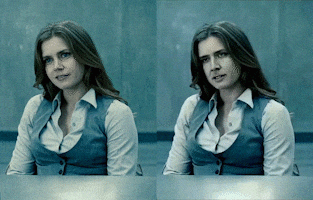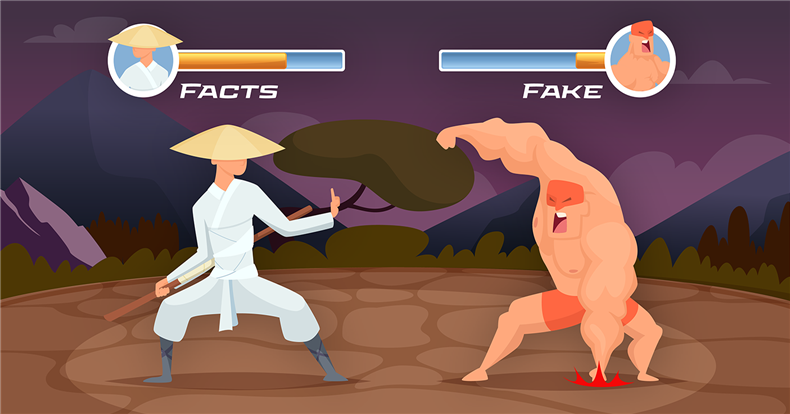Wayne Journell
University of North Carolina at Greensboro
Introduction from World History Project (WHP) Team: Thoughtfully and effectively navigating online information sources is more difficult than ever. It’s also more important than ever. World History Project puts tools in teachers’ and students’ hands that allow help them evaluate information in the current media landscape. Here Wayne Journell of the University of North Carolina at Greensboro discusses the importance of addressing and overcoming “fake news” in the classroom.
Since the 2016 U.S. presidential election, the term “fake news” has become ubiquitous. But the meaning of the term differs based on who is using it and the context in which it is being used. At a basic level, fake news refers to verifiably false information that is presented as if it is true. The most infamous example is the Russian publication of false information on social media during the 2016 Presidential Election. They posted and amplified phony stories about the candidates in an attempt to whip up controversy, drive traffic to their sites and benefit financially, and potentially sway the American voters. Different political camps have long accused specific media outlets of bias. Today, Donald Trump uses the term fake news to describe any story that he feels is critical of him, no matter how legitimate or reputable the news outlet. The populace has become cynical of mainstream media outlets, and they are unsure how to evaluate political information. So how are we supposed to judge what is true and what is false? Can trust be restored?
Schools are in a unique position to help students discern what information is reliable when exploring an unregulated media landscape. As such, teachers need to be willing to introduce the concept of fake news in their classes and unpack the various ways it is used in society. Media literacy has been a staple of K-12 education for decades; however, the current media landscape demands that we move beyond archaic frameworks such as the CRAAP test. Memes, deepfakes, and other products of 21st century technology do not lend themselves well to these types of checklists, nor do traditional media literacy approaches get at why both types of fake news mentioned above are so prevalent in society.

An example of deepfake technology: actress Amy Adams from the 2013 motion picture Man of Steel. (left) is modified to have the face of actor Nicolas Cage (right). Fair use.
The good news is that many of the approaches to helping students learn to think historically are the same ones needed to successfully navigate online political information. Concepts such as sourcing, contextualization, and corroboration are essential to making sense of the deluge of political information that comes across our screens on a daily basis. Just as one should not draw conclusions about a historical time period based on one source, people should not make political decisions based on one article, post, or tweet.
Yet, people regularly share or retweet fraudulent political information without vetting it, even people who have been equipped with the skills to verify information online. Therefore, an additional component to teaching about fake news is understanding why people create fake news and why people so easily succumb to it. In order to answer these questions, teachers must engage their students in discussions around psychosocial concepts such as confirmation bias and motivated reasoning. These concepts suggest that humans are naturally inclined to process new information in ways that support their existing worldviews.
In conclusion, teaching about fake news is a complex but essential aspect of civic education in the 21st century. When individuals lose the willingness or ability to vet their political information, democracy is at risk. The resources listed below provide more information and strategies for engaging in this type of instruction.
Resources
Journell, W. (Ed.). (2019). Unpacking fake news: An educator’s guide to navigating the media with students. New York, NY: Teachers College Press.
Stanford History Education Group. (2019). Civic online reasoning curriculum. Available at https://cor.stanford.edu/
Breakstone, J., Smith, M., Wineburg, S., Rapaport, A., Carle, J., Garland, M., & Saavedra, A. (2019). Students’ civic online reasoning: A national portrait. Retrieved from: https://purl.stanford.edu/gf151tb4868
McGrew, S., Breakstone, J., Ortega, T., Smith, M., & Wineburg, S. (2018). Can students evaluate online sources? Learning from assessments of civic online reasoning. Theory & Research in Social Education, 46, 165-193.
About the author: Wayne Journell is Professor and Associate Chair of the Teacher Education and Higher Education Department at the University of North Carolina at Greensboro. His research focuses on the teaching of politics and political processes in K-12 education. He is a two-time recipient of the Exemplary Research in Social Studies Award from the National Council for the Social Studies and is currently the editor of Theory & Research in Social Education, the premier research journal in the field of social studies.
 For full access to all OER Project resources AND our amazing teacher community,
For full access to all OER Project resources AND our amazing teacher community, 
